Sharing is caring!
Table of Contents
ToggleIntroduction to Bottom Round Roast Cooking
Cooking a bottom round roast, a prized cut known for its robust flavor and tender texture, is a culinary adventure worth exploring. This guide, “How to Cook a Bottom Round Roast,” is your comprehensive roadmap to mastering this dish. From selecting the finest cut to the final slice, every step is crucial in transforming this humble beef cut into a mouth-watering feast. The bottom round roast, often overshadowed by more popular cuts, deserves a spot in your cooking repertoire. Its lean nature not only offers a healthier option but also challenges the cook to bring out its best flavors and tenderness.
Whether you’re a seasoned chef or a home cook, understanding the nuances of this cut is key. We’ll cover essential techniques, from marinating and seasoning to various cooking methods that suit your lifestyle and taste preferences. Our guide is designed to equip you with the skills and knowledge to cook a bottom round roast to perfection, making every meal a memorable experience. Let’s embark on this flavorful journey together and turn your next meal into a celebration of taste and culinary skill.
Discover more about selecting quality beef cuts and delve into the intricacies of marinating techniques.
Selecting the Perfect Bottom Round Roast
Selecting the perfect bottom round roast is the first crucial step in the journey of “How to Cook a Bottom Round Roast.” This cut, known for its leanness and rich beefy flavor, can elevate your meal when chosen correctly. Start by looking for a roast with a bright, uniform red color and some marbling. These streaks of fat are flavor enhancers and key to a juicy, tender result.
The shape of the roast also matters. Choose one that’s evenly thick, which ensures consistent cooking. Size is another consideration; think about the number of servings you need. A good rule of thumb is half a pound per person, which accounts for cooking shrinkage.
Next, consider the source. Quality meat comes from well-raised animals. Opt for grass-fed beef if possible, as it offers a deeper flavor profile and is often more sustainable. Don’t hesitate to ask your butcher for recommendations or look for reputable suppliers at local markets or specialty stores.
Finally, don’t overlook the roast’s age. Beef that has been aged appropriately will be more tender and flavorful. If you’re unsure, ask about the aging process. This knowledge not only aids in selecting the best bottom round roast but also enriches your overall cooking experience.
Remember, the right bottom round roast doesn’t just cook well; it also brings a sense of satisfaction to the chef and delight to those who savor it. With these tips in hand, you’re well on your way to mastering how to cook a bottom round roast that’s truly unforgettable.
Essential Tools for Cooking
When diving into “How to Cook a Bottom Round Roast,” having the right tools at hand is as essential as the recipe itself. A well-equipped kitchen sets the stage for a successful roast, ensuring it cooks evenly and develops the perfect crust and flavor. Here’s what you’ll need:
- Roasting Pan: Choose a heavy-duty roasting pan that can handle the weight of the roast and withstand high oven temperatures. A pan with a rack is ideal, as it allows heat to circulate around the meat, cooking it evenly.
- Meat Thermometer: This is crucial for gauging the doneness of your roast. A digital instant-read thermometer gives you quick, accurate readings, ensuring you cook the roast precisely to your desired level of doneness.
- Sharp Carving Knife and Cutting Board: A sharp knife is vital for clean, effortless carving. Pair it with a large, sturdy cutting board that gives you ample space to work and contains any juices.
- Aluminum Foil: This common kitchen item plays a vital role. Use it to tent your roast while it rests, allowing the juices to redistribute and the meat to reach its peak tenderness.
- Kitchen Twine: If your roast is unevenly shaped, tying it with kitchen twine can help maintain its shape during cooking, leading to more even cooking and easier carving.
- Basting Brush and Oven Mitts: A basting brush is handy for applying glazes or juices, enhancing flavor and moisture. Oven mitts protect your hands from the high heat of the oven and pan.
Equipped with these tools, you’re well-prepared to tackle any recipe and master how to cook a bottom round roast. Each tool plays a role in transforming your cut of meat into a perfectly cooked, flavorsome, and impressive meal.
How to Cook a Bottom Round Roast : Preparation Techniques
Mastering “How to Cook a Bottom Round Roast” begins with effective preparation techniques. This stage is crucial for enhancing flavor and ensuring tenderness. Here’s how to prep your bottom round roast for success:
- Trimming: Start by trimming any excess fat. While some fat adds flavor, too much can make the roast greasy. Use a sharp knife to carefully remove large fat caps, leaving just a thin layer for flavor.
- Seasoning: The next step is seasoning. Generously salt and pepper the roast to enhance its natural flavors. For a more complex taste, create a rub using herbs like rosemary, thyme, and garlic, or spices like paprika and cumin. Rub this mixture all over the roast, ensuring even coverage.
- Marinating (Optional): For extra tenderness and flavor, consider marinating the roast. A simple marinade can be made with olive oil, vinegar or wine, herbs, and spices. Place the roast and marinade in a zip-lock bag, ensuring the meat is well-coated, and refrigerate for several hours or overnight.
- Bringing to Room Temperature: Before cooking, it’s essential to let the roast sit at room temperature for about 30 minutes. This step ensures more even cooking, preventing the exterior from overcooking while the center reaches the desired temperature.
- Tying the Roast (If Needed): If the roast is unevenly shaped, tie it with kitchen twine at two-inch intervals. This helps maintain a uniform shape, leading to more consistent cooking and easier carving.
With these preparation techniques in your culinary toolkit, you’re well on your way to delivering a bottom round roast that’s flavorful, tender, and perfectly cooked. Remember, the attention you give during preparation directly impacts the quality of your final dish, making these steps integral to your success in cooking a bottom round roast.
Marination Strategies
Developing effective marination strategies is a key part of “How to Cook a Bottom Round Roast,” transforming this lean cut into a tender, flavorful masterpiece. The right marinade infuses the meat with depth and complexity, tenderizing it for a perfect roast. Here’s how to master the art of marination:
- Choose Your Base: A good marinade starts with an acidic base. This can be wine, vinegar, or citrus juices like lemon or lime. The acid helps break down the proteins, making the meat more tender.
- Add Oil for Moisture: Incorporate an oil like olive or canola to keep the roast moist and juicy. Oil also helps dissolve fat-soluble flavors from spices and herbs, enhancing the taste.
- Select Your Flavorings: Herbs and spices are marination stars. Classic choices include rosemary, thyme, garlic, and black pepper. For a unique twist, experiment with spices like paprika, cumin, or a touch of brown sugar for sweetness.
- Combine and Whisk: Mix your ingredients in a bowl, whisking to ensure a well-blended marinade. Remember to balance the flavors – a bit of salt to enhance, sweetness to round off the sharpness of the acid, and herbs for aroma.
- Marinate in the Right Container: Place your roast in a zip-lock bag or a non-reactive container like glass or plastic. Pour the marinade over, ensuring the meat is well-coated. Seal or cover, then refrigerate.
- Timing is Key: Marinate for at least a few hours, preferably overnight. This gives the flavors time to penetrate and tenderize the meat. However, avoid over-marinating, as the acid can start to cook the meat, affecting its texture.
- Discard Used Marinade: After marinating, discard the used marinade. If you want to use it as a sauce, boil it first to eliminate harmful bacteria.
By following these marination strategies, you can elevate your bottom round roast, ensuring a dish that’s juicy, tender, and bursting with flavor. The marinade not only adds taste but also contributes to a tender, succulent roast, essential in mastering how to cook a bottom round roast.
Oven Cooking Method
Mastering the oven cooking method is crucial in the journey of “How to Cook a Bottom Round Roast.” This traditional approach highlights the roast’s natural flavors, creating a tender and juicy centerpiece for your meal. Here’s a step-by-step guide to perfecting the oven roast:
- Preheat the Oven: Start by preheating your oven to 325°F (163°C). This moderate temperature allows the roast to cook evenly, developing a rich flavor and tender texture.
- Prepare the Roast: After marinating or seasoning, let the roast sit at room temperature for about 30 minutes. This ensures more uniform cooking.
- Roast Placement: Place the roast fat-side up on a rack in a roasting pan. The rack allows heat to circulate around the meat, cooking it evenly. The fat cap, when placed on top, self-bastes the roast, keeping it moist.
- Cooking Time: As a general rule, cook the roast for about 20 minutes per pound. However, relying on time alone can be misleading. Use a meat thermometer to check for doneness. For medium-rare, aim for an internal temperature of 135°F (57°C), and for medium, 145°F (63°C).
- Basting: While not essential, basting the roast with its juices every 30 minutes can add flavor and prevent drying. If the pan dries out, add a bit of beef broth or water.
- Resting the Roast: Once cooked to your preference, remove the roast from the oven. Tent it loosely with aluminum foil and let it rest for about 15-20 minutes. Resting allows the juices to redistribute, resulting in a more tender and juicy roast.
- Carving and Serving: Slice against the grain for the tenderest cuts. Serve the roast with your favorite sides and enjoy the fruits of your culinary efforts.
By following these steps in the oven cooking method, you can create a bottom round roast that’s flavorful, tender, and perfectly cooked. This technique is a cornerstone in learning how to cook a bottom round roast, bringing out the best in this classic beef cut.
Grilling the Bottom Round Roast
Grilling the bottom round roast is a fantastic way to infuse smoky flavors and achieve a delicious char, essential skills in learning “How to Cook a Bottom Round Roast.” This method requires attention to detail and temperature control to ensure the roast remains juicy and tender. Here’s your guide to grilling perfection:
- Preparation: Start with a well-seasoned or marinated roast. Allow it to come to room temperature for about 30 minutes before grilling, which promotes even cooking.
- Preheat the Grill: Heat your grill to a high temperature for searing. You’ll need both high and low heat zones – the high for searing and the low for slow cooking.
- Searing: Place the roast on the high heat zone to sear. Cook each side for a few minutes until it develops a nice crust. This searing locks in the juices, enhancing the roast’s flavor.
- Move to Low Heat: After searing, transfer the roast to the low heat zone of the grill. Cover the grill to create an oven-like environment, which helps in cooking the roast evenly.
- Monitoring Temperature: Use a meat thermometer to monitor the internal temperature of the roast. For a medium-rare finish, aim for an internal temperature of 135°F (57°C).
- Resting: Once the roast reaches the desired temperature, remove it from the grill. Let it rest for about 15-20 minutes, tented with foil. This resting period allows the juices to redistribute, ensuring a moist and tender roast.
- Carving: Slice the roast against the grain for the most tender eating experience.
Grilling a bottom round roast might seem challenging, but with the right techniques, it’s a straightforward process that yields delectable results. Mastering this method is a crucial aspect of how to cook a bottom round roast, promising a meal that’s both flavorful and satisfying.,
Alternative Cooking Methods
Exploring alternative cooking methods can add variety and ease to the process of “How to Cook a Bottom Round Roast.” While oven roasting and grilling are traditional, other techniques can yield equally delicious results with different textures and flavors. Here are two popular alternatives:
- Slow Cooking:
- Preparation: Season or marinate the roast as desired. Browning it in a skillet before slow cooking can enhance flavor.
- Cooking: Place the roast in a slow cooker. Add a liquid base like broth, wine, or a sauce to keep it moist. Vegetables and herbs can be added for extra flavor.
- Setting: Cook on low for 8-10 hours or on high for 4-5 hours. This low-and-slow approach makes the meat exceptionally tender and flavorful.
- Serving: Once cooked, let the roast rest before carving. The slow cooker retains moisture, making the meat succulent and easy to slice.
- Pressure Cooking:
- Preparation: Season the roast. Use the sauté function to brown the meat directly in the pressure cooker for added depth of flavor.
- Cooking: Add liquid to the pot – broth, wine, or water work well. Seal the pressure cooker.
- Setting: Cook under high pressure for about 60-80 minutes, depending on the size of the roast. The high pressure cooks the meat quickly while keeping it tender.
- Release: Allow natural pressure release for about 15 minutes before quick releasing the rest. This gradual release helps maintain tenderness.
- Serving: Let the roast rest, then carve. The pressure cooking method locks in flavors, resulting in a juicy and aromatic roast.
Each alternative method offers its unique advantages, whether it’s the set-and-forget simplicity of slow cooking or the speed and convenience of a pressure cooker. By mastering these techniques, you expand your culinary repertoire in how to cook a bottom round roast, allowing for creativity and flexibility in your kitchen.
Achieving Perfect Doneness
Achieving perfect doneness is a critical aspect of “How to Cook a Bottom Round Roast,” ensuring that each bite is flavorful and tender. The key to nailing this is understanding the internal temperatures at which beef is cooked to different levels of doneness. Here’s how you can get it right:
- Invest in a Good Thermometer: A reliable meat thermometer is your best friend in this process. It takes the guesswork out of cooking, letting you know exactly when your roast has reached the desired temperature.
- Know Your Temperatures: For a bottom round roast, the ideal internal temperatures are:
- Rare: 125°F (52°C) – A cool red center.
- Medium Rare: 135°F (57°C) – Warm, with a mostly pink to red center.
- Medium: 145°F (63°C) – Warm, pink center.
- Medium Well: 150°F (65°C) – Slightly pink center.
- Well Done: 160°F (71°C) and above – Little to no pink.
- Let It Rest: After cooking, let your roast rest for about 15-20 minutes. This allows the juices to redistribute, resulting in a juicier, more tender roast. Remember, the roast will continue to cook slightly while it rests, so remove it from the heat a few degrees before your target temperature.
- Slice Properly: Carve your roast against the grain for the most tender eating experience. This cuts through the muscle fibers, making the meat easier to chew.
By closely monitoring the internal temperature and allowing adequate resting time, you can achieve the perfect level of doneness every time. These guidelines are essential in learning how to cook a bottom round roast, bringing you closer to preparing a meal that’s both delicious and cooked exactly to your liking.
Common Mistakes to Avoid :
Avoiding common mistakes is crucial in mastering “How to Cook a Bottom Round Roast.” Even small errors can lead to a less than desirable outcome. Here are key pitfalls to steer clear of:
- Not Allowing the Meat to Reach Room Temperature: Cooking the roast straight from the fridge can result in uneven cooking. Always let it sit at room temperature for about 30 minutes before cooking.
- Skipping the Searing Process: If you’re roasting or slow cooking, searing the meat first can make a big difference. It locks in flavors and juices, creating a delicious crust.
- Overcooking: Bottom round roast is lean and can become tough if overcooked. Use a meat thermometer to cook it to just the right temperature. Remember, the meat continues to cook a bit after it’s removed from the heat.
- Cutting the Meat Right Away: Let the roast rest for 15-20 minutes after cooking. Cutting it too soon can cause the juices to run out, leaving the meat dry.
- Not Seasoning Enough: This cut benefits from generous seasoning. Salt and other spices not only enhance flavor but also help tenderize the meat.
- Forgetting to Slice Against the Grain: Slicing the roast against the grain shortens the muscle fibers, making each piece more tender and easier to chew.
- Using the Wrong Cooking Method: Not every cooking method suits a bottom round roast. Opt for methods that allow for slow cooking or proper temperature control, like roasting or braising.
By avoiding these common errors, you greatly improve your chances of a delicious result. Each tip contributes to a better understanding of how to cook a bottom round roast, ensuring a meal that’s both enjoyable and memorable.
Expert Tips from Chefs
Gleaning expert tips from chefs can elevate your skills in “How to Cook a Bottom Round Roast.” These insights from culinary professionals can turn a good roast into an exceptional one. Here are some valuable tips:
- Season Early: Season the roast well in advance, ideally the night before. This allows the salt and spices to penetrate the meat, enhancing its flavor.
- Use a Thermometer: Chefs swear by meat thermometers. It’s the most reliable way to ensure your roast is cooked perfectly to your liking.
- Don’t Underestimate the Power of Resting: Allowing the roast to rest after cooking is non-negotiable. This step lets the juices redistribute, ensuring a moist, tender roast.
- Sear for Flavor: Searing the roast before cooking (especially when slow cooking or braising) adds depth and complexity to the flavor profile.
- Incorporate Fresh Herbs: Fresh herbs like rosemary, thyme, and garlic can transform the flavor of your roast. Add these to your marinade or rub for a fresh, aromatic touch.
- Low and Slow is Key: Slow cooking at a lower temperature helps tenderize this lean cut, preventing it from drying out.
- Be Creative with Leftovers: Chefs love to repurpose leftovers. Think sandwiches, salads, or soups to make the most of your roast.
- Keep It Simple: Sometimes, less is more. Don’t overload with too many flavors. Let the natural taste of the beef shine through.
- Consistent Thickness for Even Cooking: If the roast is uneven, tie it with kitchen twine. This ensures even cooking and easier carving.
- Stay Flexible: Be ready to adjust cooking times and temperatures based on the size and shape of the roast. No two pieces of meat are exactly alike.
By applying these chef-approved tips, you’ll enhance your ability to cook a bottom round roast that impresses with its flavor, tenderness, and presentation. Remember, cooking is an art, and these tips are your palette for creating a culinary masterpiece.
How to Cook a Bottom Round Roast :
Cooking a bottom round roast to perfection is a satisfying culinary achievement. This lean cut, known for its rich beefy flavor, becomes tender and juicy when cooked correctly. Here’s a comprehensive guide on how to cook a bottom round roast:
- Preparation:
- Begin by selecting a high-quality bottom round roast with some marbling and uniform thickness.
- Season the roast generously with salt, pepper, and your choice of herbs and spices. For deeper flavor, marinate it for a few hours or overnight.
- Searing:
- Preheat a skillet or oven to high heat.
- Sear the roast on all sides until it develops a brown crust. This step locks in juices and adds flavor.
- Oven Roasting:
- Preheat your oven to 325°F (163°C).
- Place the seared roast on a rack in a roasting pan. Insert a meat thermometer into the thickest part of the roast.
- Roast until the thermometer reads 135°F (57°C) for medium-rare or 145°F (63°C) for medium. This typically takes about 20 minutes per pound.
- Resting:
- Once the roast reaches the desired internal temperature, remove it from the oven.
- Tent it loosely with aluminum foil and let it rest for about 15-20 minutes. Resting allows the juices to redistribute, resulting in a more tender roast.
- Carving and Serving:
- Slice the roast against the grain for tender cuts.
- Serve with your favorite sides – roasted vegetables, mashed potatoes, or a fresh salad.
Remember, the key to a perfect bottom round roast lies in proper seasoning, careful monitoring of the cooking temperature, and allowing the meat to rest before carving. With these steps, you’re set to enjoy a delicious, perfectly cooked bottom round roast that’s sure to impress.
Bottom Round Roast with Herb Crust
Ingredients:
- 1 (3-4 pound) bottom round roast
- 3 cloves garlic, minced
- 2 tablespoons fresh rosemary, chopped
- 2 tablespoons fresh thyme, chopped
- 2 tablespoons olive oil
- Salt and freshly ground black pepper
- 2 cups beef broth
Directions:
- Preheat oven to 325°F (165°C).
- In a small bowl, mix together minced garlic, rosemary, thyme, olive oil, salt, and pepper. Rub this mixture all over the roast.
- Place the roast in a roasting pan and pour beef broth around it.
- Roast for about 1 hour and 15 minutes, or until the internal temperature reaches 135°F (57°C) for medium-rare.
- Remove from oven and let rest for 10-15 minutes before slicing.
Prep Time: 10 minutes | Cooking Time: 1 hour 15 minutes | Total Time: 1 hour 25 minutes
Kcal: 290 kcal per serving | Servings: 6 servings
FAQs on Cooking Bottom Round Roast
Certainly! Crafting a helpful FAQ section can address common questions and concerns about cooking a bottom round roast. Here are some frequently asked questions with their answers:
- How long should I cook a bottom round roast?
- Generally, cook a bottom round roast for about 20 minutes per pound at 325°F (163°C) for medium-rare. However, always use a meat thermometer to check for doneness.
- What internal temperature should I aim for?
- For medium-rare, target an internal temperature of 135°F (57°C). For medium, aim for 145°F (63°C). Remember, the roast will continue to cook a bit as it rests.
- Should I marinate a bottom round roast?
- Marinating can add flavor and tenderness to this lean cut. A marinade with acid, like vinegar or wine, and herbs or spices is ideal. Marinate for several hours or overnight for best results.
- Can I cook a bottom round roast in a slow cooker?
- Absolutely! Slow cooking is great for this cut. Cook on low for 8-10 hours or on high for 4-5 hours for a tender, juicy roast.
- How do I know when the roast is done?
- The most reliable method is using a meat thermometer. Insert it into the thickest part of the roast to check the internal temperature.
- What’s the best way to slice a bottom round roast?
- Always slice against the grain. This means cutting perpendicular to the muscle fibers, resulting in more tender slices.
- Can I freeze cooked bottom round roast?
- Yes, you can freeze it. Slice the roast, let it cool completely, and store it in airtight containers or freezer bags. It can be frozen for up to 3 months.
These FAQs provide a handy reference for anyone looking to master the art of cooking a bottom round roast, ensuring delicious results every time.
Conclusion :
In conclusion, mastering how to cook a bottom round roast can transform this lean cut into a delectable centerpiece for any meal. From the careful selection of the meat to the final slice, each step plays a vital role in ensuring a tender, flavorful roast.
Firstly, remember that the key lies in proper preparation, whether it’s through marinating or seasoning, and cooking it to the right temperature. Secondly, using a meat thermometer is crucial for achieving the perfect doneness. Additionally, allowing the roast to rest before carving, and slicing against the grain are essential practices for the best results.
Consequently, by following these guidelines and tips, even novice cooks can achieve a perfectly cooked bottom round roast that’s sure to impress family and guests alike. Ultimately, this guide aims not only to provide practical cooking advice but also to inspire confidence and creativity in the kitchen, making the cooking process as enjoyable as the meal itself.

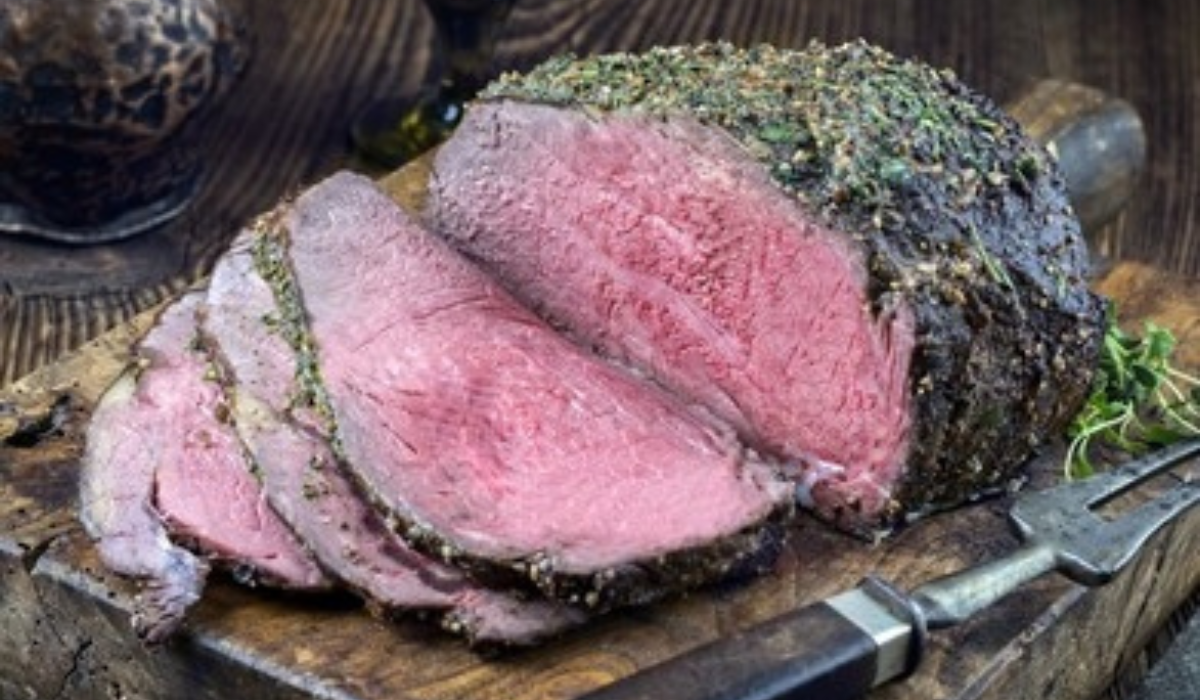

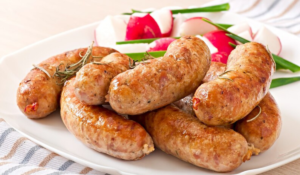
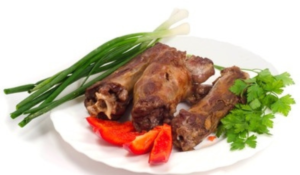
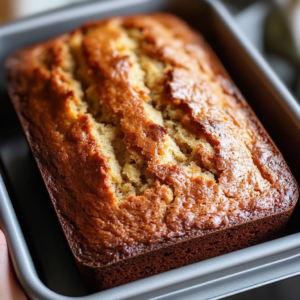
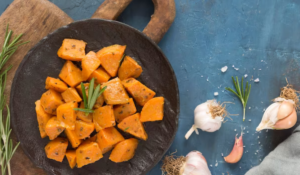
2 thoughts on “How to Cook a Bottom Round Roast: Your Essential Guide”
Comments are closed.